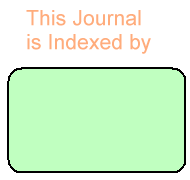Abdullah Monahi Albogami,
Mustafa E Omer,
Abdulkareem M Al Bekairy,
Abdulmalik Alkatheri,
Alaa Eldeen B Yassin ![]()
For correspondence:- Alaa Yassin Email: yassina@ksau-hs.edu.sa Tel:+966509426323
Received: 7 April 2017 Accepted: 25 July 2017 Published: 31 August 2017
Citation: Albogami AM, Omer ME, Bekairy AM, Alkatheri A, Yassin AE. Modified geometry three-layered tablet as a platform for class II drugs zero-order release system. Trop J Pharm Res 2017; 16(8):1773-1778 doi: 10.4314/tjpr.v16i8.4
© 2017 The authors.
This is an Open Access article that uses a funding model which does not charge readers or their institutions for access and distributed under the terms of the Creative Commons Attribution License (http://creativecommons.org/licenses/by/4.0) and the Budapest Open Access Initiative (http://www.budapestopenaccessinitiative.org/read), which permit unrestricted use, distribution, and reproduction in any medium, provided the original work is properly credited..
Purpose: To optimize a geometrical design of three-layered tablets for controlling the release of indomethacin (Ind) as a BCS class II model.
Methods: The core formulation was optimized to ensure non-disintegrating tablet with a slow release behavior. Three-layered tablets were prepared by a single-step direct compression method by manual feeding of a hydrophobic layer in the bottom followed by Ind core layer and another hydrophobic layer at the top using 6 and 12 mm round compression sets. Four batches were prepared, differing only in either thickness of the drug layer or tablet diameter. A number of factors were studied, including tablet thickness to diameter ratio and drug layer surface area. The rate of Ind released was determined using USP dissolution apparatus I.
Results: The optimum drug layer formulation contained Ind (40%), polyvinylpyrolidone K30 (40 %), and ethyl cellulose (20 %). The t50% (time taken for 50 % drug release) for the four three-layered tablet batches with varying diameter to thickness ratios were in the range of 1.5 to 3.7 h. The diameter to thickness ratios were in good correlation with % Ind release after 4 h (R2 = 0.94). It was found that all batches complied with zero order kinetic model.
Conclusion: The new one-compression phase applied in this study is successful in producing three-layered tablets in a single-step with very good mechanical attributes. The approach of designing a controlled release tablet via control of the surface area of drug release is feasible for non-swelling matrices.
Archives


News Updates